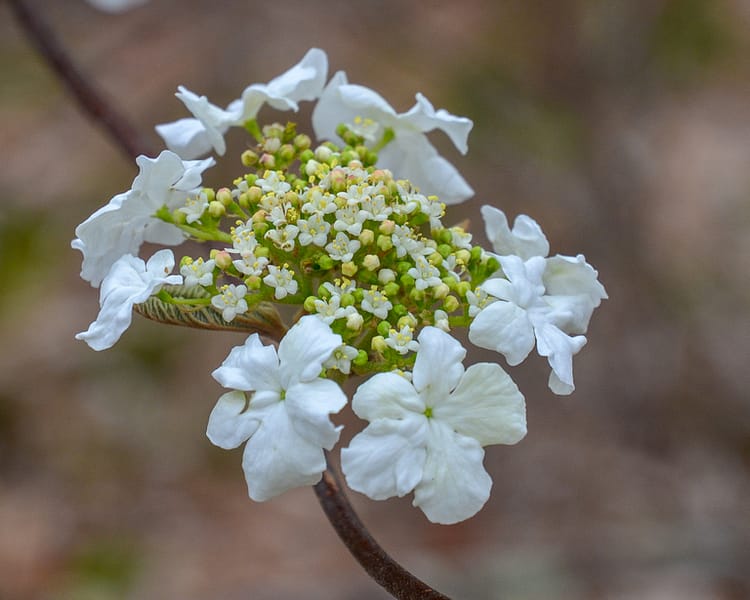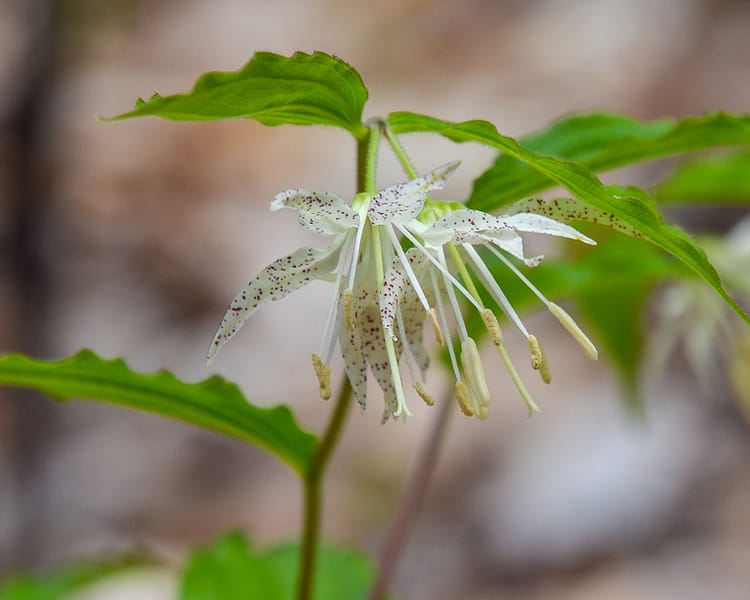Day One: HIKING-weather or not?
Hike, see spring wildflowers, repeat….again and again, but always a thrill! There are not many weather events- springtime or not- that deter our hikes. However, predicted high winds, heavy snow and lightening are weather conditions that cause re-evaluation of the best laid plans. During the week, the goal was to refine our iKamper testing, and of course, to capture spring wildflowers at every stage of bloom in the Southern Appalachians.
The weekend forecast included a threat of rain and storms, but we hedged our bets that there would be minimal rain Friday night and through most of Saturday. We headed out to camp Friday night in the Coleman Boundary, which is an absolute haven of plant diversity. You can see other Coleman Boundary hikes and images here: https://hikescape.org/big-ivy-coleman-boundary-4-6-19/
We had a bear in camp at 2am, apparently lured by the smell of strong coffee; I am sure it was a long winter and he was in need of caffeine. Bernie heard him sniffing about and gave warning; he scampered off, knocking over the coffee pot. Another positive of the iKamper- you are sleeping above the wild things that visit in the night.
Bear with us….
There were some light sprinkles in the very early morning hours, and we decided to break camp, do a short hike to Douglas Falls and head for lower elevations with more wildflowers on the Route 197 side of Pisgah National Forest. We only ended up logging about 6.5 miles, but the sights along the way compensated for fewer miles.
On the Douglas Falls Trail, witch hobble was blooming; a welcome sight in a forest that is just beginning to “green up”.

Once on the other side of Route 197, the wildflower show was ramping up- literally, as ramps were popping up everywhere. Ramps are often described as highly olfactory, and people either love them or hate them; I think they have a very strong odor when they are raw. Ramps aside, the showstoppers were yellow mandarin, trillium and trout lilies, which had not been in bloom last weekend.

There are two other species of wildflowers that are striking in their appearance. Found in rich forest coves, Showy orchis is truly lovely; just emerging from the basal, fleshy leaves. In reviewing my photo archives over the past seven years, I have returned to this site again and again due to the sheer beauty and diversity of the wildflowers found here.

I also located Clinton’s speckled lily, which I don’t recall seeing in this location before. It had not yet bloomed, but once the flowers emerge- WOW! Their petals and sepals often have dark pink and purple speckles. There is another Clintonia, the blue-bead lily, that has a yellow, umbellate flower with bright blue fruit in the fall, and it grows at higher elevations.

Day Two: Swamped by wildflowers?
Due to the uncertain weather, we decided to play it by ear and head south to check the progression of the wildflowers there.
I am a botany geek, so most plant communities are to my liking….outside of true swamps where water moccasins and pythons lurk. Mountain bogs, however, have their own appeal. Last spring, my friend Vicki informed me about Swamp Pink, found in only a few locations in Henderson and Transylvania counties. You can find more about Swamp Pink in NC here: https://www.fs.fed.us/wildflowers/Rare_Plants/profiles/TEP/helonias_bullata/index.shtml
Always motived by a species that I have not seen before, I visited this location twice, two weeks apart in April and early May, just weeks after my knee surgery on March 1. Needless to say, my range of motion and pain level were a bit limiting! My friend Joan gamely accompanied me as I carefully navigated through the muck and twisted branches. We found the Swamp Pink in a boggy rhododendron thicket. It was absolutely stunning, albeit a bit late in the bloom cycle. In hindsight, it may not have been the smartest move, at least from a physical perspective.
I was determined to see Swamp Pink in all its glory and in peak bloom this year. Our destination was off of Route 276 to explore the boggy areas. Here is what Swamp Pink looks like as it begins its growth cycle. While the Swamp Pink was not yet blooming, it was exciting to know the stage of growth to estimate when to return in the future. Swamp Pink is a native threatened species; visit the plant profile here: https://plants.usda.gov/core/profile?symbol=HEBU

Helonias bullata- Swamp pink 
early growth of Helonias bullata- Swamp pink
Here are some images of last year’s Swamp Pink:

Swamp pink (Helonias bullata) 
Helonias bullata
The other Southern Appalachian “ordinaries”
There are so many wildflowers in the all-too brief period of spring! Here is the beautiful wild geranium, providing food for the insects.

Another springtime favorite, dwarf crested iris, varies from deep purple to almost periwinkle blue. This spring, we have seen very few in bloom; Due to the weather, the wildflower season is a bit farther behind in comparison to last year.

Trout lily has been spectacular this year, covering the ground with its mottled basal leaves, drooping sepals, and anthers varying from yellow to deep purple-maroon. The trailing arbutus and Halberd-leaf violets were in full bloom on the forest floor.


And finally, a patch of purple wakerobin with near bursting blooms. This group was nestled streamside, with cut leaf toothwort and violets in close proximity.

It was a gorgeous weekend to explore the HIKEscape in our mountains; the rainy weather means that more blooms are ahead. Enjoy your journey and thanks for following along with us!



1 Comment
Mike Jaconson · April 16, 2019 at 6:31 am
Omg. Those Swamp Pinks from last year are stunning. I cannot wait to see this years when you go back!
Comments are closed.